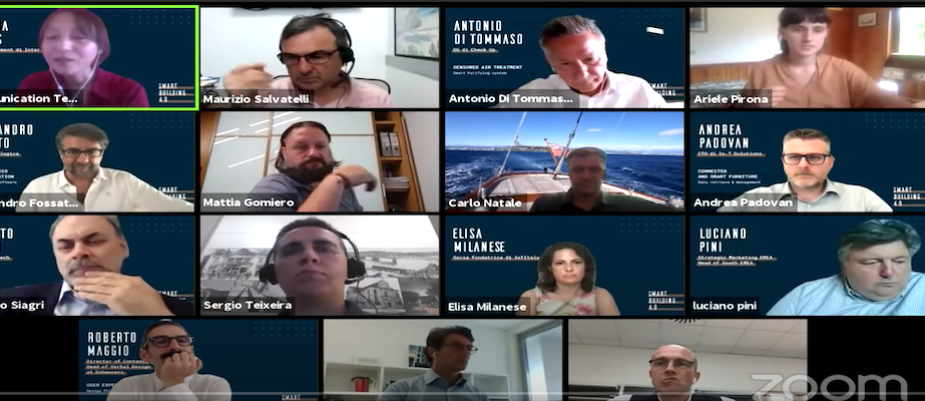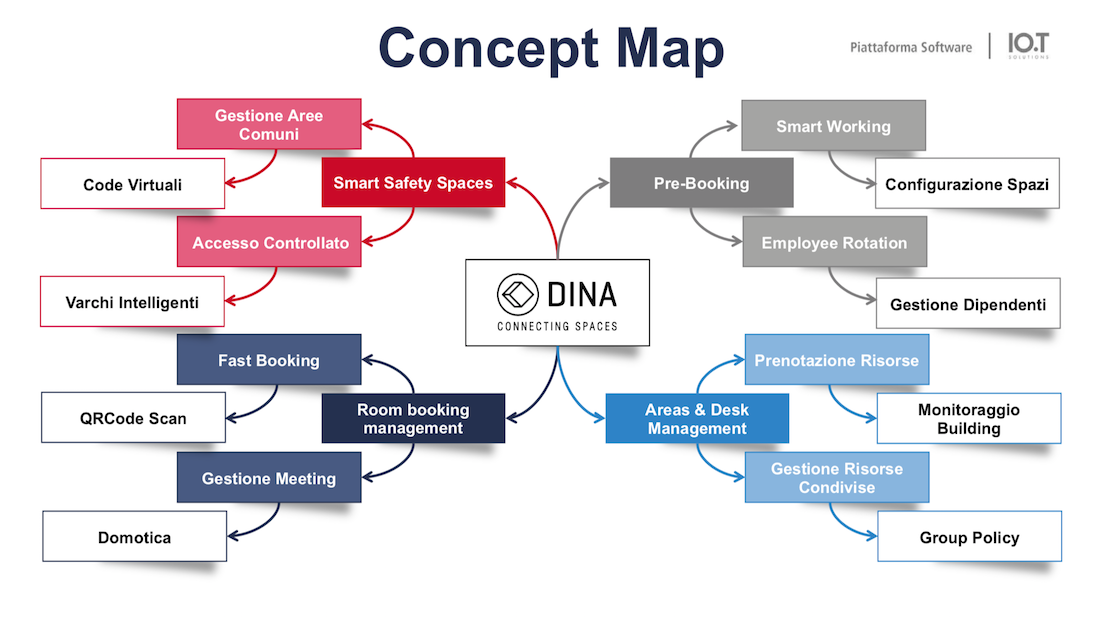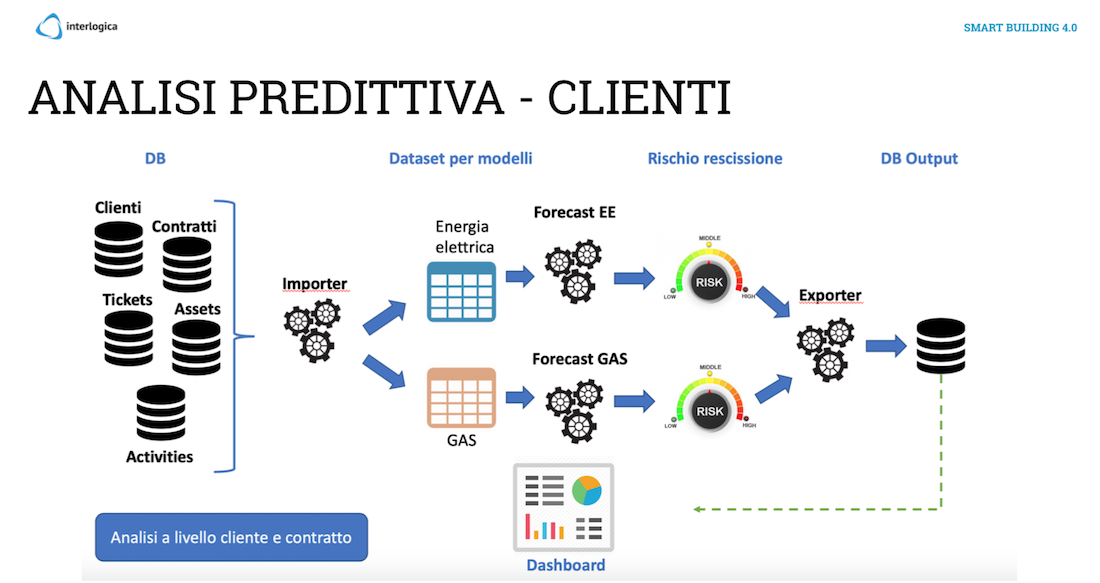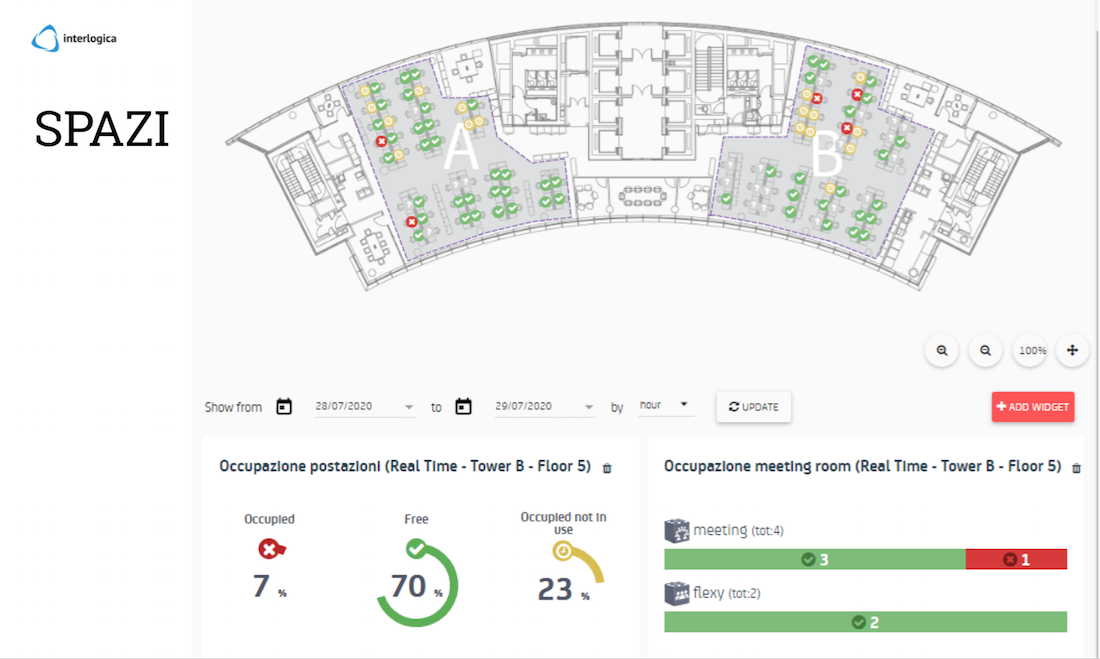
Create an ecosystem and be agile in changing along with the company: these are the main characteristics of the digital building according to what emerged from the Smart Building 4.0 webinar: Design, Data & Technologies, organized by Interlogica and IoT Italy, which we have decided to include in our WOWbinar column. The seminar involved several players in the sector, recreating that “value chain” typical of the IoT sector, in a debate that clearly showed the need to move from single product design approach to interoperability and service design.
The IoT is slowly changing the world around us, the way we find information about it and also the way we interact with each other. Yet, at times, this great opportunity seems to slip away due to a limiting approach, as Alessandro Fossato, CEO of Interlogica, said:
“The word IoT is becoming more and more widespread, but customers mostly have a market-oriented approach, hardly understand the full potential of it. Although, design is about giving meaning and the IoT does not necessarily involve starting from the available technology, and it does not mean just adding a sensor to a product that individually connects to something.
We need a perspective that starts from human-centred design, from understanding what the real users’ needs and opportunities are, to build services that generate business models capable of guaranteeing sustainability. And it is at that point that technology can acquire a greater sense because it puts its strength at the service of models that are bound to function. We must start from the concept of service in order to make augmented products “.

As also told by Roberto Siagri, coordinator of the ANIE group that published the third Libro Bianco 3.0 dello Smart Building there are 4 key points of development of the IoT concerning the building:
1. Interoperability among objects, made possible through their digital twins in data lakes, and among different actors and companies, called to create ecosystems, to form what Luciano Pini of STMicroelectronics has defined “value chain”, to cope effectively to the complex management required by IoT products/services.
As Roberto Maggio of Enhancers explained, IoT design should follow three phases: the first is mapping in order to understand the typical behaviours, occasions and methods of interaction with the object in the physical realm; the second is comparison which consists in investigating how real habits can be implemented through digital opportunities; and finally the enhancement, or the creation of a hybrid experience, that adds new meanings to the object and enables valuable services.
2. Servitization: The entry of the app economy into the industrial world has guided the transition from product to service, towards an outcome economy, in which the customer pays for the result he gets and not the product itself. This process also concerns the office, as Andrea Padovan, of Io.T Solutions, pointed out:
“In this era, software and hardware technology will be the pillar of the ways of working, but also of the way of experiencing the space. Digital and analogue realities that surround the user will change the value chains and business models. The office will become a service and going to the office an experience. The office changes from the product to a platform capable of supporting the facility manager: we need to focus more and more on an approach based on design-driven. “

3. From BIM to Digital Twin: from a static view of the building, we are moving to a more dynamic and real-time one. The data constantly collected by sensors and other technologies allow the creation of a digital twin of the building that allows a dynamic representation of the building object and an intervention on it capable of giving numerous benefits in terms of maintenance, safety and well-being of the occupants. This dynamic system also includes the purification and sanitization systems mentioned by Antonio Di Tommaso, by Check Up.
4. User experience and cybersecurity. The user experience is given by a system of interoperable connected products that together form a building as a service. In this scenario, it is essential to start from the very beginning of the design with cybersecurity in terms of device integrity, the robustness of communication channels and confidentiality of data.
Text by Gabriele Masi.

















